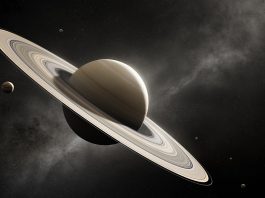NASA’s Artemis Rover is to land near the Nobile region – the mountainous and crater rich area at the South Pole on the Moon.
In 2023, NASA’s Volatiles Investigating Polar Exploration Rover (VIPER) will land close to the western edge of the Nobile Crater, which is situated on the Moon’s South Pole. Once there, VIPER – part of Artemis – will investigate and map the regions surface and subsurface for water and other valuable resources.
VIPER is to launch on a SpaceX Falcon-Heavy rocket for transportation to the Moon by Astrobotic’s Griffin lander under NASA’s Commercial Lunar Payload Services initiative.
The South Pole on the Moon
The Moon’s South Pole is a unique and entirely unexplored area, colder than almost anywhere else in our solar system. Currently, researchers have only examined the region by utilising remote sensing instruments, such as those on NASA’s Lunar Reconnaissance Orbiter and the Lunar Crater Observation and Sensing Satellite.
The data obtained from these missions, alongside similar missions, has assisted with researchers’ efforts and has enabled them to draw the conclusion that ice and other resources are perpetually present in the shadowed areas of the Moon near the poles.
Following a vast landing site selection process, the mountainous area west of Nobile Crater was selected as VIPER’s landing site because of its rover-accessible terrain and array of nearby sites of scientific interest, such as permanently shadowed areas.
“Once on the lunar surface, VIPER will provide ground truth measurements for the presence of water and other resources at the Moon’s South Pole, and the areas surrounding Nobile Crater showed the most promise in this scientific pursuit” explained Thomas Zurbuchen, associate administrator for science at NASA Headquarters. “The data VIPER returns will provide lunar scientists around the world with further insight into our Moon’s cosmic origin, evolution, and history, and it will also help inform future Artemis missions to the Moon and beyond by enabling us to better understand the lunar environment in these previously unexplored areas hundreds of thousands of miles away.”
The Nobile Crater
Nobile Crater is an impact crater that was developed as a result of a collision with another smaller celestial body, and is nearly always covered in shadows, enabling the presence of ice. Smaller, more accessible craters around Nobile’s perimeter, will also offer VIPER with optimal locations to examine as part of its search for ice and other resources.
“Selecting a landing site for VIPER is an exciting and important decision for all of us,” Daniel Andrews, VIPER project manager, added. “Years of study have gone into evaluating the polar region VIPER will explore. VIPER is going into uncharted territory—informed by science—to test hypotheses and reveal critical information for future human space exploration.”
The team at NASA assessed feasible rover traverse paths, considering factors such as where VIPER could use its solar panels to charge and keep warm during its 100-day journey. The investigations founds that the area near Nobile Crater offered a lot of flexibility.
VIPER’s journey
VIPER’s currently planned trajectory will enable the rover to visit at least six sites of scientific interest, with additional time to spare.
“Our evaluation of the landing site was driven by science priorities,” explained Anthony Colaprete, VIPER lead project scientist at NASA’s Ames Research Center in Silicon Valley, California. “We seek answers to some pretty complex questions and studying these resources on the Moon that have stood the test of time will help us answer them.”
Through this mission, the VIPER team hopes to examine how frozen water and other resources initially appeared on the Moon. As well as this, they plan to distinguish where they originated, how they were preserved for billions of years, how they escape, and where they go.









